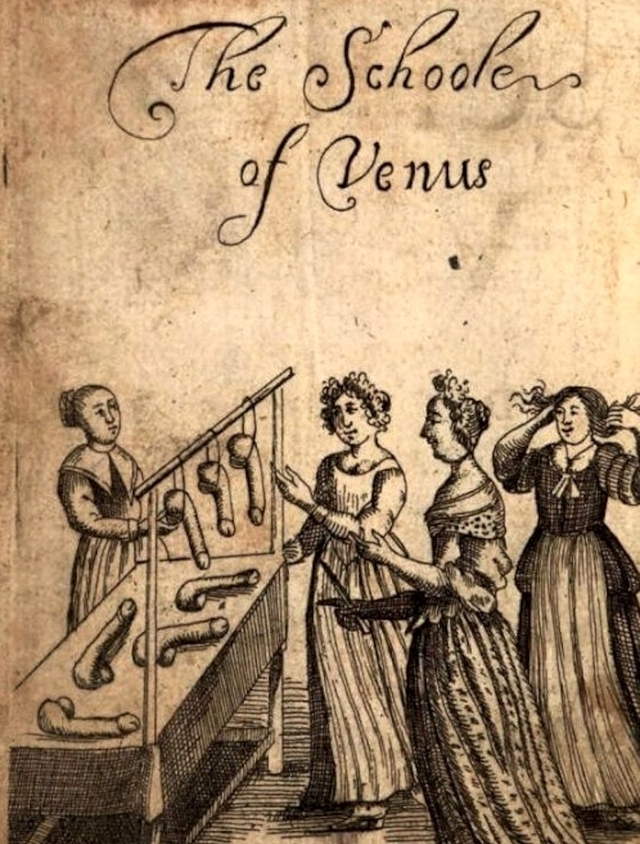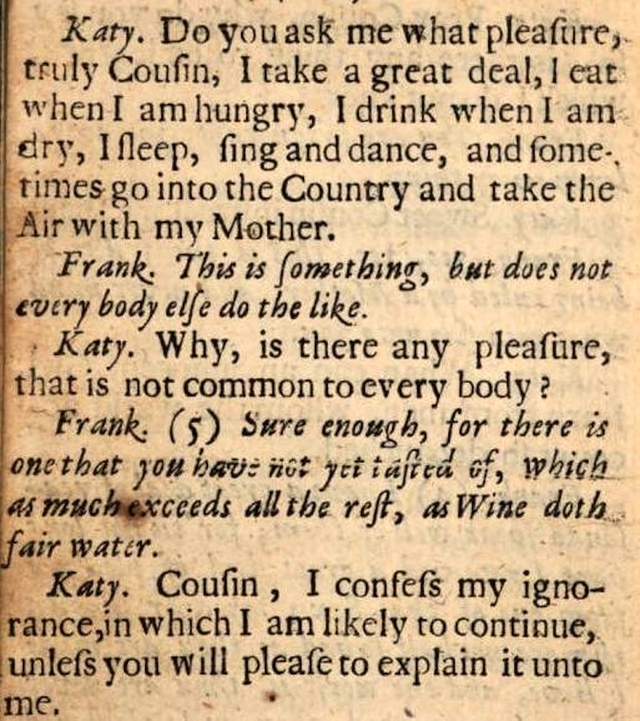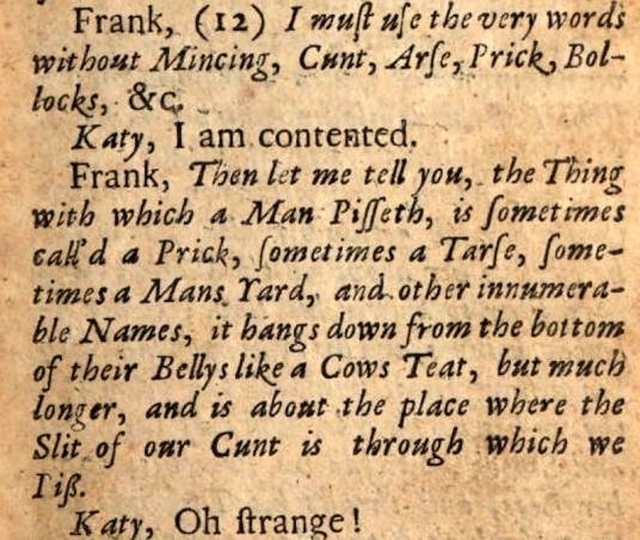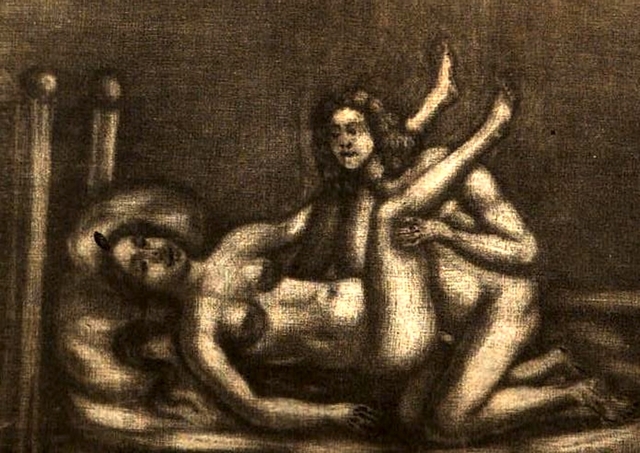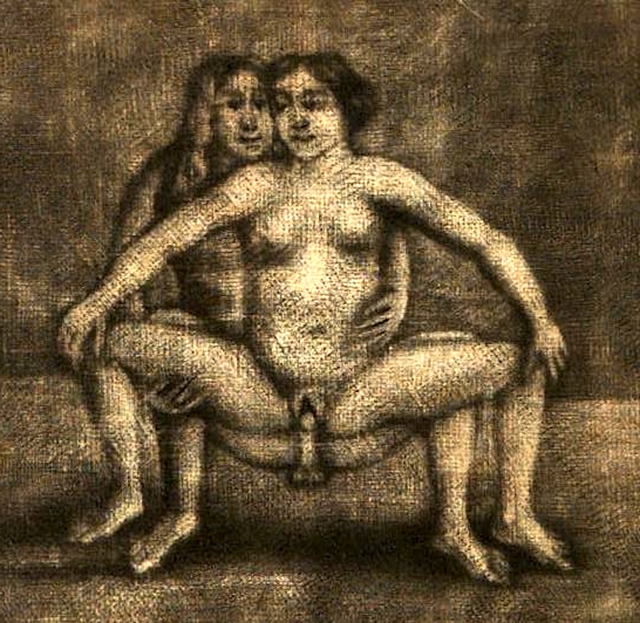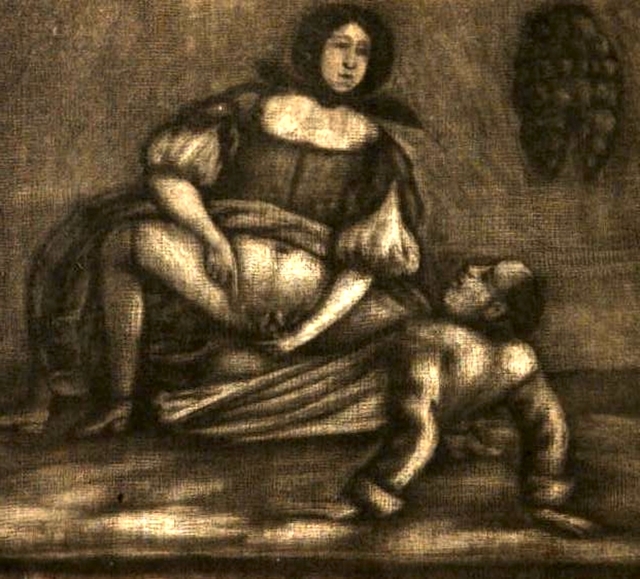
“This Misterie of Fucking”: A Sex Manual from 1680
“[I] stopped at Martin’s, my bookseller, where I saw the French book which I did think to have had for my wife to translate, called L’escholle des filles, but when I come to look in it, it is the most bawdy, lewd book that ever I saw… I was ashamed of reading in it.”
—The Diary of Samuel Pepys, Monday, January 13, 1668
Samuel Pepys, the famous womanizer and diarist, was certainly no prude. This is a man, let’s remember, who brought his telescope to church so he could enjoy “the great pleasure of seeing and gazing at a great many very fine women” and who famously detailed his numerous extramarital affairs in a mixture of Spanish, French and Italian.
So what was the book that made even Pepys blush? It turns out to be a surprisingly modern exploration of sexuality written in the form of a dialogue between a teenage girl and her more experienced cousin. Originally written in French and published in English in 1680 as The School of Venus, or the Ladies Delight Reduced into Rules of Practice, the anonymous book’s frontispiece engraving made its subject matter clear:
The 166-page text, which has been digitized by Google Books, opens with a pseudo-dedication to one “Madam S— W—,” which lauds “with what eagerness you perform your Fucking excercises” and imagines “a Pyramide of those standing Tarses [penises]“ to rival “that Monument of Sculls erected, by the Persian Sophy in Spahaune.” Poetic stuff.
The main narrative then begins, introducing its two principle characters: Katherine, “a Virgin of admirable beauty” and “a Kins-Woman of hers named Frances.” Frances “come[s] to chat” with Katherine one morning, finding her alone and working “as if it were a Nunnery.” Frances reproaches her cousin for being “such a Fool [as] to believe you can‘t enjoy a mans company without being Married.” Katherine naively explains that she enjoys the companionship of many men (“my two Unkles, my Cousins, Mr. Richards and many others”) but Frances explains that she means something altogether different (note that the early modern ‘s’ can sometimes look like an ‘f’):
Frances reveals that even Katy‘s parents indulge in “this mistery of Fucking,” and not necessarily with one another (she speculates that “your Father had often his pleasure of your Maid Servant Margaret” and that “your Mother herself” might have “some private friend”). Next, we’re treated to a seventeenth-century explication of the male and female anatomy:
This isn’t exactly advanced-level sex education, but Frances does use some vivid language, memorably likening the scrotum to “something like a Purse” containing “Bollocks… not much unlike our Spanish Olives.”
The School of Venus punctures some common notions about pre-modern European sexuality, which is too frequently dismissed as ‘Puritanical.’ Although the book was a product of a misogynistic and male-dominated society, it is surprisingly frank about female sexual autonomy. Katy almost immediately begins wondering “why should not ones Finger yield a Wench the like pleasure” as a penis. Soon after, Frances speculates about the societal benefits that would result “if Women govern’d the world and the Church as men do.” Female multiple orgasms are referenced throughout, and there appear to be a few scattered allusions to the clitoris (referred to as “the top of the Cunt” which “stands out.”)
Some of the language in the text is also surprisingly modern, as when Frances advises her to acquire “a Fucking friend… one that will not blab” and Katy worries about how “to break the Ice” with Mr. Rogers, the friend with benefits she has in mind.
At page thirty-four, the text shifts gears into a full-fledged sex manual. Popular consciousness seems to associate pre-modern sex with the missionary position, but Frances extolls the benefits of variety:
sometimes my Husband gets upon me, and sometimes I get upon him, sometimes we do it sideways, sometimes kneeling, sometimes crossways, sometimes backwards… sometimes Wheelbarrow, with one leg upon his shoulders, sometimes we do it on our feet, sometimes upon a stool.
The dialogue ends, well, with a bang. A series of crude mezzotints illustrate the various positions suggested by Frances:
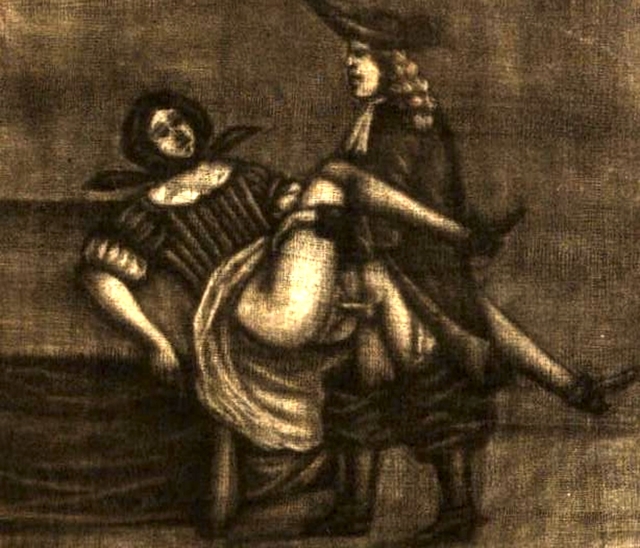
“Let him rather incline to Lean than Fat, his Hair of a dark Brown and long enough to Curl upon his Shoulders.”
So what do we know of this book’s history? Scholars ignored texts like these throughout much of the nineteenth and twentieth centuries, but since the 1980s historians of sexuality and gender have engaged with The School of Venus. James Turner’s Schooling Sex argues that the book is part of a larger “educational fantasy in sexual writing” which bounds female sexuality by a “set of male-ordered ‘rules.’” Turner also uncovers the publication history of the book, which was “simultaneously prosecuted to extinction and flaunted in the most public places.” He notes that Pepys came across the book “in a conspicuous and crowded bookshop” and that purveyors of these types of works were not shady smut-peddlers, but mainstream booksellers who stocked a range of works including scientific texts and sermons. Annamaire Jagose argues that School of Venus fails to mention the clitoris specifically, but cites a contemporary midwifery manual written by one Jane Sharp that describes it as “the seat of lust.”
There’s a lot more to analyze here—toward the end, Frances describes women who will wait “until they feel the sperm coming, when immediately they will fling their rider out of the Saddle” and men who “tye a Pigs Bladder to the Top of their Pricks,” and claims dubiously that “they must both spend [orgasm] together to get a Child.” But that will have to wait. Look for a more in-depth exploration of early modern sexual manuals in a future issue of The Appendix.
A small postscript about Samuel Pepys. In typical fashion, Pepys overcame his embarrassment and returned three weeks later to purchase the book, reasoning that “it was not amiss for a sober man once to read over to inform himself in the villainy of the world.” And read it over he did: Pepys skipped church the next day to peruse it in his study, noting in pseudo-Spanish that “it did hazer my prick para stand all the while.”
He burnt it immediately afterward.


